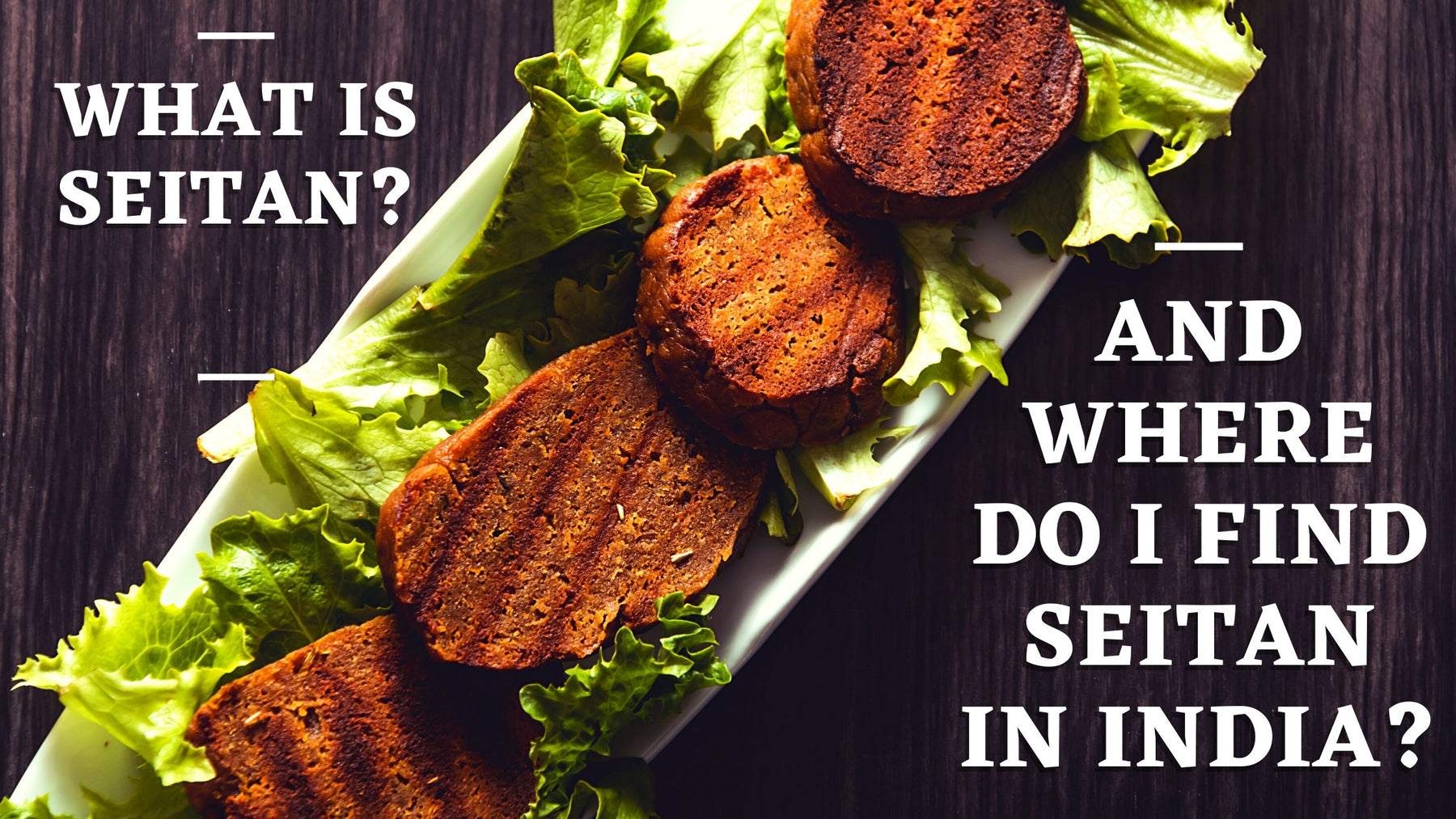
Where do I find Seitan in India?
Table Of Content
Are you vegetarian looking for a meat substitute in your diet? The term "wheat meat" has been around for a very long. However, it is only recently that wheat meat acquired the term of Seitan.
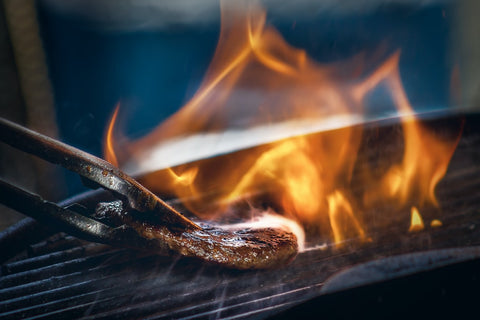
Despite being made from wheat, Seitan is nothing like bread or other wheat products. It consists of pure gluten and water, and therefore, it is low on carbs and fats and very high in protein. The usage of Seitan has allowed vegetarians and vegans to prepare meat-based dishes without actually using it.
In this article, you will learn what Seitan is, where it originated, its benefits, and how you can make it at your home.
Seitan
Seitan is the term used to describe wheat gluten in vegetarian, vegan, whole- food, and macrobiotic circles.
Wheat Gluten consists of gluten, the main protein present in wheat. It is prepared by washing wheat flour dough using water to remove all the starch particles. The result of this process is an insoluble elastic mass, the gluten. In the next step, gluten is cooked well to make it ready for consumption.
People are now well aware about the health benefits of soybean-based meat alternatives such as Tofu for a while now. Many people call Tofu vegetarian meat due to its texture and feel. However, some varieties of Seitan have a better texture and chewy nature as compared to Tofu. As a result of this property, you will find that many Asian restaurants use Seitan to provide that meat-like dishes. Mock Duck is a popular dish that is made using Seitan.

Origin of Seitan.
The history of Seitan, or wheat gluten, goes back to the 6th century AD. The followers of Buddhism began using wheat gluten as a meat substitute in various dishes. The earliest mention of wheat gluten dates back to 535 AD. Jia Sixie wrote about gluten in his encyclopedia about agriculture. In his encyclopedia, Sixie describes how people use wheat gluten to prepare a special kind of noodles called Bo duo.
Talking about Seitan, this term is a lot more recent than the ingredient used in Chinese noodles. George Ohsawa, a Japanese advocate of the macrobiotic diet, coined this term in 1961. He used this term to describe a wheat gluten product created by his student, Kiyoshi Mokutani.
The American firm, Erewhon, began importing this product to the US in 1969, and thus, Seitan became popular in the western world.
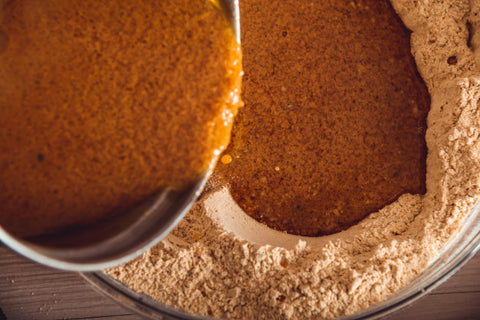
Benefits of Eating Seitan
People who advocate vegan food talk about the numerous benefits of Seitan. It is rich in protein and low on carbs. However, eating food that is made entirely of gluten has some downsides, especially if you have any auto- immune diseases. For most people (including me) though, gluten has no effects on the body.
Some key benefits of Seitan are;
Highest protein content when compared to any food on the planet (including meat)
Consuming one ounce, i.e., 28g of Seitan, provides you with 104 calories and 21g protein. As you can see, protein makes 75 percent of Seitan. If you want a protein-rich vegetarian diet, including Seitan to your list of foods would be a good idea.
It has Other Essential Minerals
You will notice that Seitan contains traces of copper, selenium, iron, phosphorus, and calcium. These minerals are needed in our bodies in limited quantities for the proper functioning of our system.
Low on Carbs and Fats
Seitan has just 4g of carbs and 0.5g of fat, making it a must include for people trying to balance macros.
This nutritional data is for pure Seitan. The product that you buy from stores may have different nutritional value as Seitan-makers add other ingredients to enhance its flavour and texture.
Who Should Avoid Seitan?
Seitan might be extremely beneficial for people who are allergic to soy products. However, it would be best to consider the following things before making Seitan an integral part of your diet.
If you avoid processed food:
First of all, Seitan is a highly processed food item. Starch from kneaded wheat flour is thoroughly washed to make Seitan. However, Seitan doesn't contain high amount of saturated fat's or preservatives. As a result, it is not as harmful as other kinds of processed food.
If your diet consists of fruits, vegetables, whole grains, nuts, and other similar products, you will find that including Seitan in your diet is a good idea. But, if you consume a lot of processed food, you might want to consider alternatives to Seitan.
People Who Are Allergic to Gluten
The second issue with Seitan is that it is basically pure gluten. As a result, people with gluten allergies cannot eat Seitan. If you suffers from Celiac disease, you should avoid the consumption of Seitan. Pre packaged Seitan also consists of high quantities of sodium.
People Who Suffer from “Leaky” Gut
Seitan might also be bad for your gut if consumed in large quantities. People who don't suffer from any disease related to the gut have properly regulated intestinal permeability. This regulated permeability allows food particles to pass through to the bloodstream without any issues. However, some people have a "leaky" gut, a condition where intestinal permeability isn't appropriately regulated. As a result, the consumption of certain food items, including Seitan, can lead to complications. Work alongside your nutritionist or look up this plan if you might have a leaky gut or irritable bowl movement.
Where to Get Seitan in India and What are the Popular Seitan Dishes?
If you live in Bangalore or near Bangalore, you will find that the House of Seitan is the best place to get raw Seitan or Seitan-based delicacies.
If you live in any other major city in India, your best bet at finding Seitan-based food items would be the popular restaurants and stores that cater to vegan food and mock meat. Burma Burma, a popular chain of Burmese restaurant across India has some fantastic mock meat dishes made from Seitan on their menu.
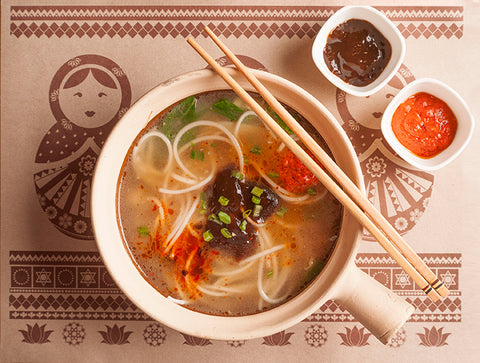
Popular Dishes Made using Seitan
In Asia, you will find that different cultures prepare Seitan-based dishes in different manners. Here are some of the popular ways to serve Seitan around the world.
In China, wheat gluten is called miàn jīn. The Buddhist created this ancient product as a substitute for meat in traditional Chinese dishes. You will find that people in China prepare a fried version of Seitan.
This dish involves tearing Seitan into small pieces and deep-frying it in the form of a fluffy ball. These balls are golden-brown in color and are served in a stew or a soup dish. You will notice that many dishes include black mushrooms with Seitan balls.
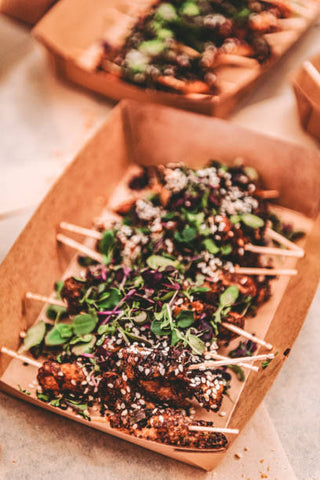
People who want a healthier version of Seitan might want to try steamed gluten. In China, you will find long sausage-like pieces of Seitan at various places. This Seitan features a dense texture and is slightly murky-whitish to greenish-grey in color. This sausage-shaped Seitan is usually torn open into strips before being used in various dishes. kǎo fū is another variant of Seitan where people bake it into a sponge-like product. You can make it by leavening raw gluten followed by baking or steaming. The sponge-like structure of kǎo fū helps it absorb juices and gives it different tastes based on the ingredients or soup you used to serve it.
Making Seitan at Home
There is a high chance that you won't find any stores or restaurants that serve Seitan in your city. In this situation, you can opt to either buy Seitan from online stores or prepare it at home. There are multiple ways to make your own Seitan, here is one video to get you started:
If you chose the latter option, you would need a Seitan starter kit that you can get from Amazon.
To make Seitan at home, you would need the starter kit and a few other ingredients.
The first thing that you need is vital wheat gluten that will be present in the starter kit. It usually comes in a powdered form, and you need to add 1/4 cups of chickpea flour or soy flour to give it a better taste and texture.
Add 1 cup water to the mixture and knead the resultant mixture properly to get a dough with a trademark Seitan texture. It involves kneading the dough until it begins to develop strands of gluten.
Once you get a meaty texture, you are ready to prepare your dish. You can bake Seitan if you are health conscious or even fry the Seitan balls.
In the end, you can either serve the Seitan as it is with a bit of garnishing or put it in a soup or a stew to add a flavor to the Seitan. i love just marinating bite size balls for a few hours in any stir fry sauce before popping them in the air fryer for 8- 10 minutes on 180 degrees.
Conclusion
It doesn't really matter how you cook or serve your Seitan unless you plan to avoid oily food. Adding Seitan to your diet has lots of benefits, and it might be a key ingredient to your healthy diet. But before you start making Seitan and try different recipes, check if you are allergic to gluten. If you are gluten intolerant, there are other products that provide the same benefits as Seitan. Have you tried Tempeh? Check this blog out:
Where can I get Tempeh in India?
In case you don't have a gluten allergy, enjoy your savoury Seitan dish to its fullest.
Have further questions or want me to help plan your nutrition? Contact me here and I will be happy to help.
If you are seitan provider in India and we miss to mention you in the blog, do feel free to reach out to us.
(Co-Authored by SEO Singh.)
Let's Just Talk. No Obligations.
I do free consultations every Tuesday's and Thursday's. Either way you will get some actionable tips to reach your fitness goals faster.




Leave a comment